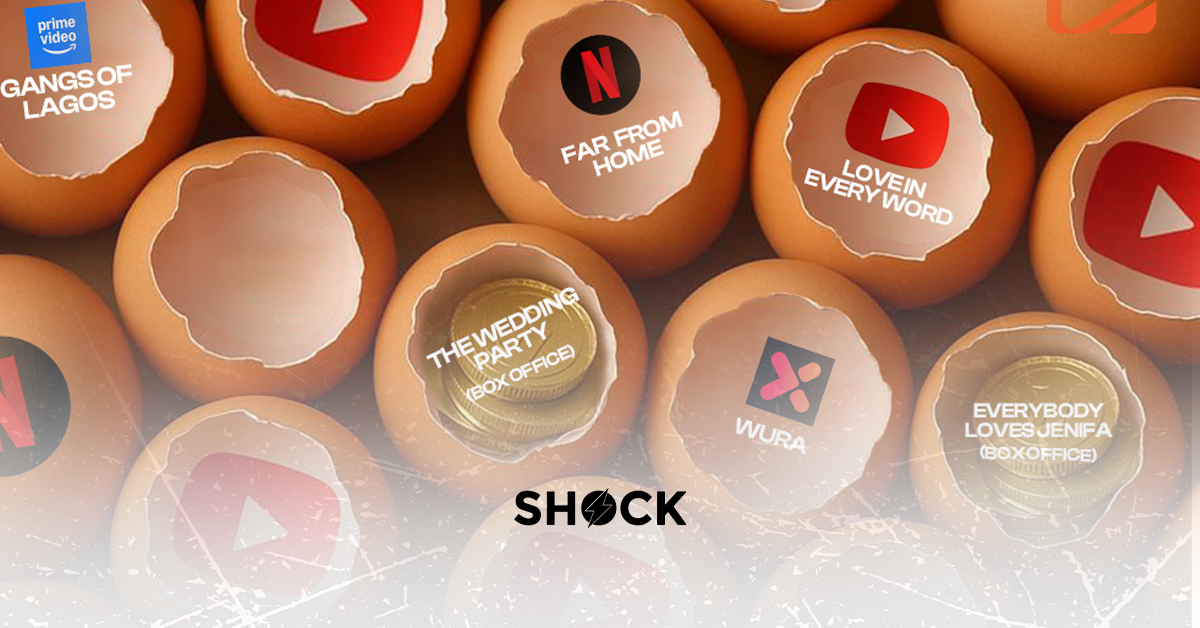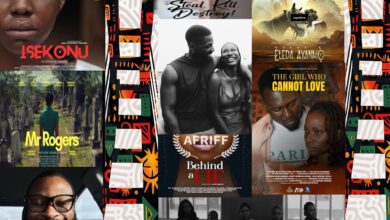The Story⚡
The success of Omoni Oboli’s Love in Every Word on YouTube has reshaped the conversation around Nollywood movie distribution on the platform. But is this success compelling enough for Nollywood filmmakers to make YouTube their primary release channel?

Tell Me More
On March 7, 2025, Love in Every Word premiered on Omoni Oboli TV’s YouTube channel, quickly capturing the attention of Nigerian netizens. Within just two weeks of its release, the film amassed an impressive 16,031,122 views, cementing its place as one of the most-watched Nollywood titles on the platform.
Written by Mfon-Abasi Michael Inyang and directed by Stanley Obi, the film boasts a runtime of one hour, fifty-five minutes, and fifty-eight seconds. It features a talented ensemble cast, including Uzor Arukwe, Bam Bam Olawunmi Adenibuyan, Osereme Inegbenebor, Amanda Iriekpen, and Thelma Chukwunwen. The project was executive produced by Omoni Oboli and Tomi Adeoye.
The narrative centers on Chioma, a career-driven woman in Lagos, who falls for Obiora Odogwu, a wealthy man she meets at a traditional introduction ceremony. Despite her deep affection for Obiora, Chioma struggles to fully embrace their relationship because he reminds her of her estranged father, whose betrayal—maintaining a secret family abroad—left her emotionally scarred. As their love story faces turbulence, Chioma’s journey toward healing and forgiveness becomes the emotional core of the film. Her eventual acceptance of her love for Obiora makes her reconcile with Obiora, rekindling their relationship.

By all measurable standards, Love in Every Word has been a resounding success. Its staggering viewership and overwhelmingly positive reviews from Nigerian audiences underscore its impact. Notably, it stands out as one of the few Nollywood titles to achieve such rapid and widespread traction on YouTube shortly after its release.
This success has sparked a debate among film critics and enthusiasts, with some suggesting that YouTube should become the primary distribution platform for Nollywood filmmakers. While this proposition stems from a genuine desire to see Nigerian filmmakers thrive—particularly at a time when major financiers like Prime Video and Netflix are scaling back their investments in Nollywood projects—it is not a recommendation that holds up under scrutiny. There are several compelling reasons why YouTube cannot and should not replace traditional distribution channels as the primary platform for Nigerian film content.
Here is our Argument
1. Limited Revenue Potential Compared to Other Platforms
While YouTube offers a global audience, its revenue model is not as lucrative as other distribution channels like Prime Video, Netflix, or traditional box office releases. YouTube primarily pays creators through ad revenue, which is calculated based on views, watch time, and ad engagement. However, the payout per view is often minimal, especially in regions like Nigeria, where ad rates are lower compared to Western markets. For high-budget films, this model is unsustainable. Platforms like Netflix and Prime Video, on the other hand, offer licensing deals and upfront payments that can cover production costs and generate significant profits. Relying on YouTube as a primary distribution channel would force filmmakers to operate on razor-thin margins, discouraging investment in high-quality productions.
2. Constraints on Creative Freedom and Genre Diversity
YouTube’s algorithm tends to favor certain types of content, particularly love-themed films, which have become a dominant trope on the platform. While these films attract views, they do not represent the full spectrum of storytelling possibilities in Nollywood. Filmmakers who explore other genres—such as action, historical dramas, thrillers, or socially conscious narratives—may struggle to gain traction on YouTube. This creates a creative bottleneck, forcing filmmakers to conform to a narrow set of themes to succeed. Encouraging YouTube as the primary distribution platform risks homogenizing Nollywood content, stifling innovation, and alienating audiences who crave diverse storytelling.
3. Lack of Prestige and Brand Value
YouTube, while accessible, does not carry the same prestige as established platforms like Netflix, Prime Video, or even traditional cinema releases. For Nollywood filmmakers seeking to elevate their craft and gain international recognition, YouTube is not the ideal platform. Films released on YouTube are often perceived as low-budget or amateurish, regardless of their actual quality.
This perception can harm the reputation of filmmakers and limit their ability to attract funding, partnerships, or awards. A theatrical release or a premiere on a global streaming platform, on the other hand, lends credibility and enhances the brand value of both the film and its creators.
4. Dependence on Algorithmic Visibility
YouTube’s algorithm plays a significant role in determining which films gain visibility and traction. This reliance on algorithmic favour can be unpredictable and unfair, as smaller or lesser-known filmmakers may struggle to compete with established channels or viral content.
Unlike curated platforms like Netflix, where films are promoted based on their merit and potential audience appeal, YouTube’s algorithm prioritizes engagement metrics, which can be influenced by factors unrelated to the film’s quality. This unpredictability makes it a risky primary distribution channel for filmmakers who need consistent and reliable exposure for their work.
5. Competition with Free Content and Piracy
YouTube is flooded with free content, including low-budget films, short skits, and user-generated videos. This oversaturation makes it difficult for high-quality, premium content to stand out. Additionally, YouTube’s open nature makes it vulnerable to piracy, as films can be easily downloaded, re-uploaded, or shared without proper authorization.
This not only undermines revenue potential but also devalues the intellectual property of filmmakers. In contrast, platforms like Netflix and Prime Video offer better protection against piracy, ensuring that filmmakers’ work is safeguarded and monetized appropriately.
In Summary
While YouTube has proven to be a viable platform for certain types of Nollywood content, it cannot replace traditional distribution channels or premium streaming services. Its limitations in revenue generation, genre diversity, and audience reach make it an impractical choice for filmmakers aiming to produce high-quality, high-budget films.
Instead, YouTube should be seen as a complementary platform—a space for experimentation, promotion, and reaching niche audiences—rather than the primary distribution channel for Nigerian film content.
 Thanks for Reading.
Thanks for Reading.
Shockng.com covers the big creators and players in the African film/TV industry and how they do business.
Let’s be friends on Instagram @Shockng



